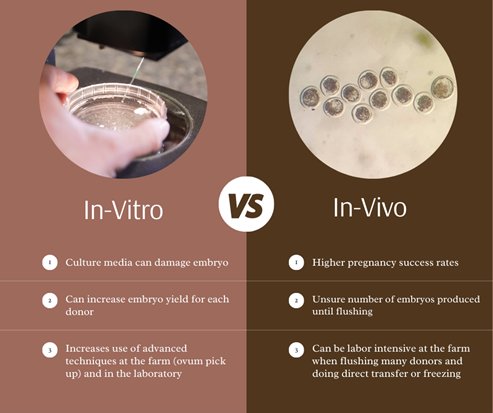
In-Vitro Embryos Versus In-Vivo Produced Embryos

For this post, we would like to discuss the difference between In-Vitro Embryos Versus In-Vivo Produced Embryos.
In-vitro produced embryos are created in a laboratory setting through in-vitro fertilization. This technique is normally done to increase embryo yield compared to the in-vivo technique. However, embryos produced in-vitro are normally of lower quality because the culture media does not exactly replicate the uterine environment. This leads to lower pregnancy rates compared to in-vivo produced embryos.
In-vivo produced embryos are created by super ovulating a donor and artificially inseminating her multiple times over the course of 2 days. This should lead to multiple oocytes being ovulated, fertilized, and turning into embryos. Unlike the in-vitro process, there is no definitive way to know how many embryos will be flushed, some cows can produce 20-30 embryos while others only produce 2. This is the risk associated with using the in-vivo method. However, the in-vivo embryos often perform better than their in-vitro counterparts regarding pregnancy success.

|
|
|